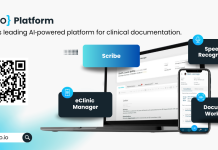Natalie Taylor, Managing Director, Public Sector, Foundry4, discusses how government can bring more digital voices into policy teams to close the gap between those designing policy and those delivering it
All too often, I hear a government minister refer to ‘digital transformation’ with a lack of clarity. Clunky catchphrases are used to mask a lack of understanding for what revamping the status quo really entails.
The fundamentals of government structure have long been at odds with fast-paced change – the creaking divide between the policy experts and those that actually implement policies is not only counterproductive but also counterintuitive.
In our recent Transforming Government Report, one of the recommendations we make is that government, and indeed any organisation needs to adopt a culture change to truly embrace digital transformation. This broadly includes adopting the principles of agile or DevOps, continuous development, faster time to market, user-centred design, multidisciplinary teams and shared responsibility for overall success.
Policy divide
The issue for government here is that the divide between policy design and delivery makes it challenging to introduce this culture and build successful digital products and services. One solution is to introduce digital voices in the delivery teams much earlier in the policy process.
This long-standing divide between policy and delivery has made it difficult to build and widely implement digital products and services, exacerbating the lengthy nature of the legislative process. However, there have been encouraging strides made in some fields which shows it can be done – with the use of data for example.
NHS Digital’s precise categorisation and storage of patient data facilitated the rapid construction of the shielding list for those who would be most vulnerable to Covid-19. Fast forward a year later, and this very same data has also been central to the vaccination rollout, prioritising those who need it the most.
We need dedicated policymakers who can navigate an increasingly complex technical landscape, to not only dream of what a digital-first country looks like, but know how to truly deliver it. This will require investment, but it is important we don’t get hung up on waiting for cash in a challenging economic environment. Rather, the focus should be on putting the right talent into the job first.
Government Digital Service (GDS)
A desire to do things differently lay behind the creation of the Government Digital Service (GDS) a decade ago. The founding principle of GDS was to help departments build services in an agile, user-centred way, enabling government to take advantage of the benefits of digital transformation. GDS was initially described as ‘a new vision for digital government’, but the purpose was lost along the way with a torrent of leadership changes and a lack of collaboration between government departments, taking the wind out of its sails.
More recently though, there are ripples that indicate we are once again heading in the right direction. Tom Read is the new CEO and Director General of GDS and has already published a strategy that hints at again tackling connecting policy design with delivery that we desperately need.
There is also a tendency of policymakers to focus on the impact of a policy on one set of people, which does not provide a holistic picture of the citizen and the wider impact on health, education and welfare, for example. A comprehensive outlook requires collaboration across government, supported by more accurate data about the societal impact of policy decisions. Examining policy success and what needs to be improved upon must be done through a broad lens.
Society is rapidly digitalising, and the government needs to move at pace to catch up. More people are now online than ever, using the internet with confidence. As a result, the digital population in the UK has grown by 3%, the equivalent of 5 years of progress, over the past 12 months.
This recoupling of policy design and delivery does not need to be a grand gesture. Policy must be an iterative process rather than a cumbersome, theoretical undertaking. Whilst the government needs to haul itself into the digital era, there is a need to recognise that building infrastructure and services at a nationwide scale takes time.
By enabling policy and delivery to work together, it is possible to design and build solutions that are effective and hit the ground running. While bringing digital voices to policy is still rare, it undoubtedly leads to better outcomes and this is something that we expect to keep growing over the coming years.











